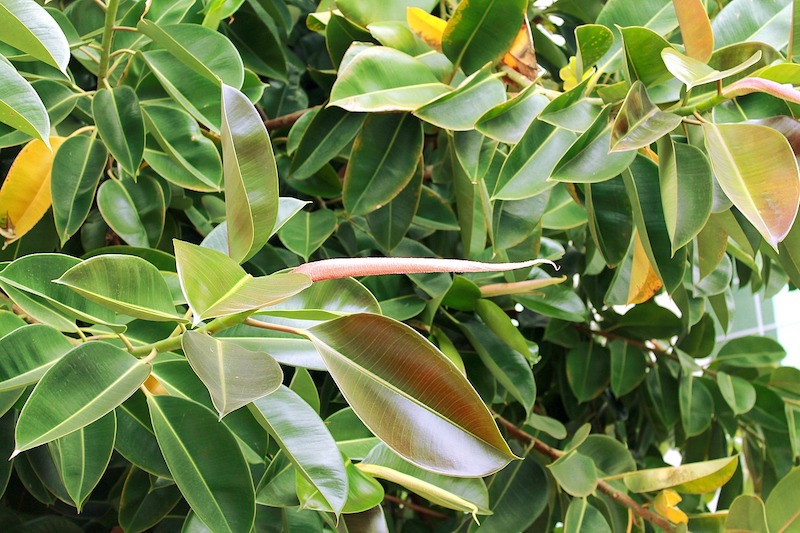Ficus is a tropical shrub native to various parts of Southeast Asia and India. When the temperatures start to warm up, consider bringing your ficus outside for a summer vacation. Let nature provide ficus’s water, light, and fresh air and only supplement when ficus needs a drink. However, make sure to gradually transition your ficus from indoors to outdoors. Ficus plants are notorious for their sensitivity to abrupt changes in the environment and may drop its leaves if the transition is too abrupt.

When To Put The Plant Outside
While ficus can tolerate temperatures as low as 55 degrees F, this evergreen thrives in temperatures ranging between 65 and 85 degrees. Since ficus may become easily stressed when exposed to abrupt environmental changes, begin slowly transitioning this ornamental from indoors to outdoors after the last threat of frost has passed and when the daily temperatures start reaching 65 degrees F. Over a 1-2 week period, incrementally increase the amount of time ficus spends outside. If the temperatures suddenly drop below 65 degrees and head towards 50, consider bringing this tropical plant back inside until temperatures are more consistent.
When To Bring the Plant Indoors
Just as you slowly transitioned ficus outdoors during the spring or summer, do the same thing during late summer or early fall when temperatures drop below 65 degrees. Over a 1-2 week period, slowly increase the amount of time this evergreen spends indoors until it reaches the maximum. This slow transition helps all plants move from one environment to another, especially ficus, a tropical that can be very sensitive to temperature changes.
When moving this ornamental indoors inspect the soil and foliage for pests, including mealybugs, scales, and thrips. Then, wipe the foliage with a damp cloth and treat it with insecticidal soap. When bringing ficus indoors, place this plant in a room separate from your other plants for the first week or two. This “plant quarantine” is a second line of defense against a pest infestation.

Caring For Ficus Outdoors
Add ficus’s beautiful, glossy green foliage to a patio, deck, entryway, or balcony when the weather allows. Grown in a container, this low-maintenance topical perennial thrives in 6 hours or more of filtered or indirect sunlight, temperatures of 65 to 85 degrees, and good drainage. Make sure to water it deeply when the top layer of soil is dry to the touch.
Plant ficus in a light-colored concrete or terracotta vessel with good drainage holes. To prevent stains on patios or decks, select containers with feet or elevate the pot on a planter stand. If inclement weather is expected, including heavy rain, winds, or hail, bring this ornamental back inside or move it to a protected location; a garage, shed, or extended awning will do. If there is no suitable place to move it, cover it with plastic until the bad weather passes, but remember to remove the covering as soon as the severe weather has passed.
 |
Author Suellen Barnes - Published 6-02-2023 |
